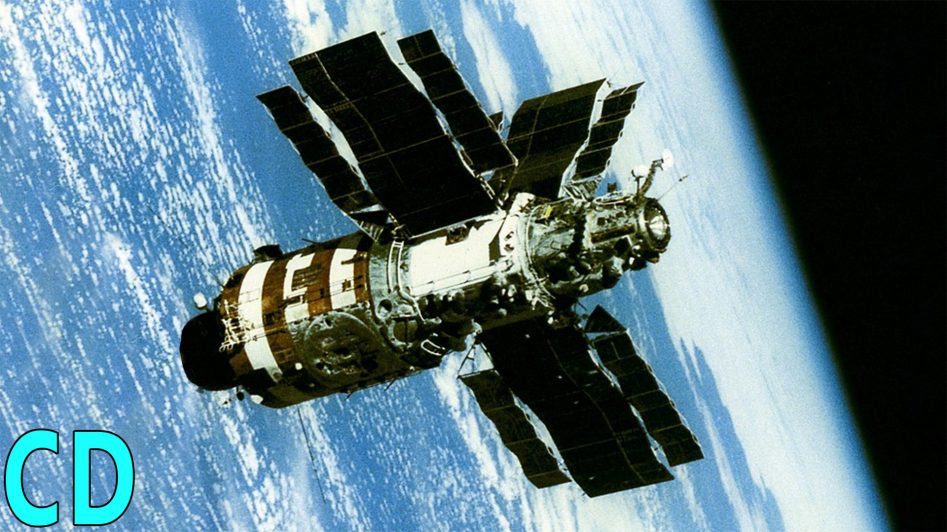In 1985 one of the most audacious space rescue missions was launched by the Soviets to recover a space station that had been dead for months due to an unknown fault. A feat that was unparalleled in space exploration and rewrote the books on what was thought possible: and yet, its story has fallen into obscurity and conspiracy theories.
In 1979, the Soviet Union was a superpower in search of a space station. ‘Mir’, the state-of-the-art orbital facility in development, was delayed and still six years from launch. But the military space station, ‘Almaz’, had also recently been cancelled, without its final mission taking place.
To maintain a presence in Low Earth Orbit, the Soviet Space Agency took the decision to fly one more single-launch station, that’s a small space station that can be lifted into orbit completely in one launch. The backup hardware for the ‘Salyut’ program could be used and a series of missions were planned for the station that would become known as ‘Salyut-7’
This small lab, orbiting two hundred kilometres (or 120 miles) above the Earth, would go further than any spacecraft before, to become a base for six long-term expeditions. But Salyut-7 would also suffer a series of strange malfunctions, and become the scene of a desperate rescue at orbital velocity.
The Space Race of the 1960s and ’70s was measured in a growing of competitive record-breaking missions. In the Soviet media, new achievements were needed to justify the expense of the space programmes, and bolster national pride. To feed this hunger, cosmonauts spent longer and longer in their capsules, on spacewalks and then, inhabiting manned space stations. The American ‘Skylab’, constructed from an adapted Saturn V upper stage, spent 84 days in orbit in 1973-74, testing the effects of microgravity on the body, and pioneering Solar observations. In 1978 the Soviet ‘Salyut-6’ exceeded the long-standing Skylab record when its first crew passed 96 days in orbit. By 1980, this record had been extended to 184 days of uninterrupted habitation.
With the upcoming ‘Mir’, the Soviets planned to do more than had ever been possible with single-launch stations. Salyut-7 could help make this a reality, by testing out new hardware and training cosmonauts. As with its predecessors, Salyut-7 had docking ports to the fore and aft, so crew rotation and resupply could happen simultaneously. Salyut had previously been supplied using the ‘Progress’ spacecraft, a derivative of Soyuz that still travels to the International Space Station today.
Salyut-7 launched aboard a Proton rocket on 19th April 1982, and on May 13th the first crew launched to rendezvous, beginning a mission that would last a record-breaking 211 days. The first task aboard the new station was to launch a 28-kilogram (61 lb) amateur radio satellite from the trash airlock. This was hailed by the Soviets as ‘the first launch of a communications satellite from a manned space vehicle’, before NASA’s planned launch of two heavy geostationary satellites from the Shuttle later that year.
Despite a successful first year, research on Salyut-7 was soon stalled by technical issues. In September 1983, a fuel leak was discovered after almost a whole tank was vented into space. In a series of spacewalks, cosmonauts conducted two in-orbit repairs and a later repair with a special tool delivered by ground resupply. The unprecedented scale of these repairs was impressive, but Salyut-7 faced a much greater challenge ahead.
In October 1984, Salyut-7’s third cosmonaut crew returned from orbit aboard Soyuz, and the space station entered autopilot mode, monitored by remote command from the Soviet ground team. On 11th February 1985, telemetry reported a huge electrical surge, knocking out radio transmission from Salyut. When ground operators attempted to bring the transmitters back online, a second surge swept through the station, knocking out radio receivers as well. Suddenly Salyut-7 was out of contact, with no way of diagnosing what might have gone wrong.
For months in 1985, the 16-metre (50-foot) long station drifted, silent and out of control. According to a Russian documentary program made in 2012, the Americans considered trying to capture Salyut-7 in the Space Shuttle’s cargo bay and bring it back to Earth. In reality, Soviet mission control considered doing the same thing with the unfinished ‘Buran’ orbiter and found it would be impossible. Although Salyut couldn’t be scooped up and carried back to earth, it was far too valuable to just abandon.
Instead, the only solution was to send up a Soyuz with a two-man crew consisting of Vladimir Dzhanibekov and Victor Savinikh to dock manually with Salyut-7 and attempt a rescue. The first problem was how do you dock with a dead space station that used an automatic powered docking system.
The engineers had to come up with an entirely new set of docking techniques. The Soyuz was a 3 man craft but with just 2 crew, the third seat and with the automatic docking system removed completely there was enough room for extra supplies, food and water and more fuel for the extended mission.
The Soyuz was fitted with a laser rangefinder and the crew took night vision goggles in case they had to dock on the night side.
With a 70-80% chance of success, the mission was given the go-ahead.
On June 6th 1985 the rescue mission launched, and orbited for two days until it caught up with Salyut-7. As the Soyuz approached more closely, it appeared that the solar panels were misaligned: the electrical systems had completely failed.
Using the laser rangefinder to align with the docking port, the crew matched the rotation of their craft to Salyut, and then slowly approached, to contact and dock. This was a major achievement: but significant danger lay ahead. Neither the crew nor ground control knew what had caused the station to ‘go dark’, or what lay in wait for them inside.
As the cosmonauts opened the hatches to equalise air pressure with the station, they felt a rush of freezing air. With Salyut’s power being offline for so long it had been exposed temperatures it had never been designed to operate in. Critical provision like water were all frozen and any number of essential life-support systems might have been damaged, ground control weren’t even sure if it was safe for the crew to be on board.
Dressed in winter clothing, the cosmonauts slowly went through the process of opening the three hatches that stood between them and the dark ‘living area’ of the station.
With handheld air quality tests, they quickly checked for carbon monoxide and other dangerous gases that could indicate a fire onboard.
The problems on the Station were electrical in nature but if they just hot wired the station from Soyuz, the fault that took down the Space station could also blow the electrics of Soyuz and then they would be stranded and face almost certain death.
Although the air supply was safe they were limited to just one crew member at a time working in the station because with no circulation systems working, the carbon dioxide from the crew members own breath could build up to dangerous levels. So one crew member stayed in the Soyuz to monitor the one working in the station.
Water was also a problem, the crew had 8 days supply in the Soyuz. If they rationed it and tapped into the Salyut’s emergency supply it would stretch to 12 days but it could take that time or longer to find the cause of the problem and get the station systems back on line, if the water ran out before they would have to leave.
After carefully working through the Salyut’s electrical systems, the cause of the power loss was eventually pinpointed to a single sensor, on one of the batteries. This malfunctioning sensor was designed to stop the batteries from overcharging.
Once a day, Everyday the main computer instructed the solar cells to charge the batteries but the faulty sensor stopped the charging almost immediately. Over time the batteries ran flat and soon the whole station went dead, unable to communicate with the ground or function at all.
Once the crew had replaced the battery and sensor and further adjustments to the out of alignment solar arrays made in August, Salyut-7 was saved and continued to support missions for a further year.
After the station was returned to service Vladimir Dzhanibekov remained on the station for a total of 110 days.
‘Mir’ launched in February of 1986, but even with its replacement in orbit, Salyut-7 continued to make history. The first crew on Mir travelled in the Soyuz to Salyut, to collect and transfer valuable equipment: the only time a station-to-station crew transfer has taken place to date.
The Soviets had intended to continue using Salyut-7 even after the launch of Mir. It was boosted into a higher orbit of 475km or 295 miles, to delay re-entry. However, due to funding cuts for future Salyut 7 missions, the collapse of the soviet union and the and the nonappearance of the “Buran” shuttle, the stations orbit gradually decayed, and in 1991, three years earlier than intended, the last Salyut broke up during and uncontrolled re-entry over south America.
It’s this determination and experience of the engineers, ground control and cosmonauts to keep Salyut 7 flying when previous stations that had gone before were allowed to fail that has been carried over in the ISS which has now been flown continuously for over 15 years by the international community.
Presented by
Paul Shillito
Written and Researched by
Andy Munzer
Additional Material by
Paul Shillito



